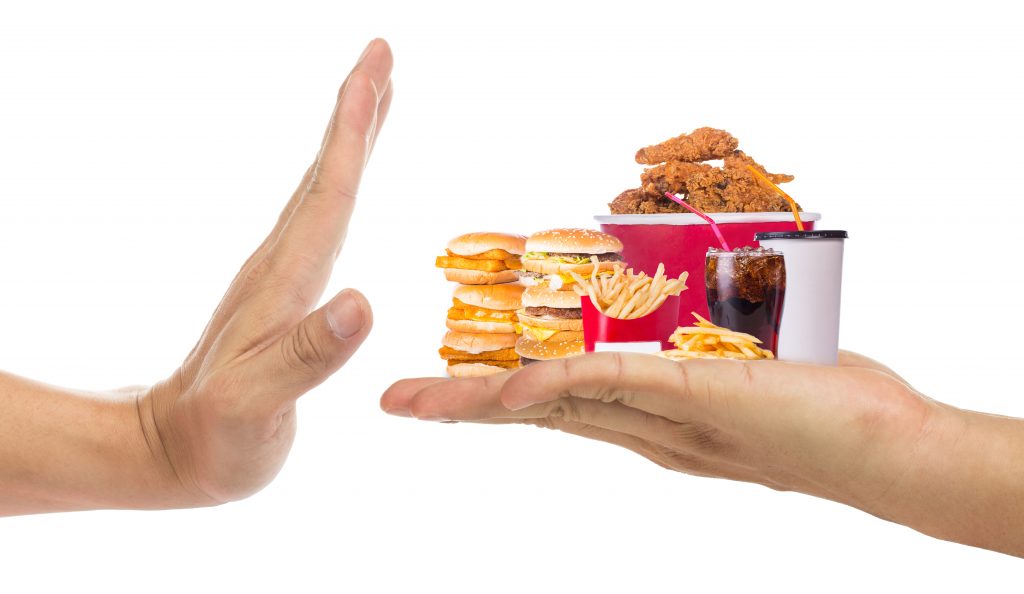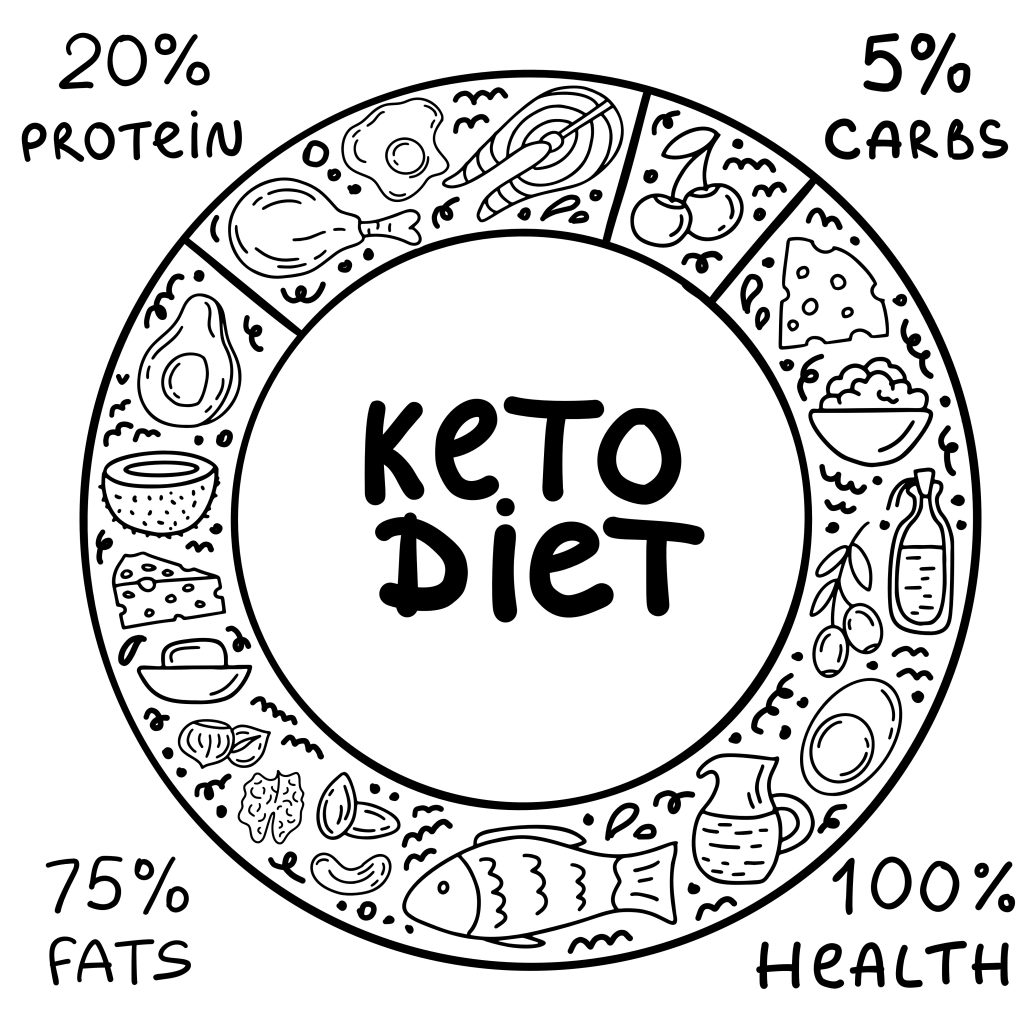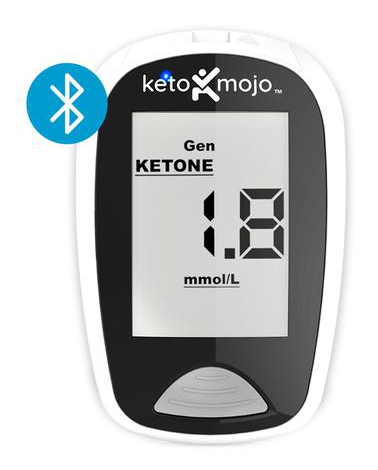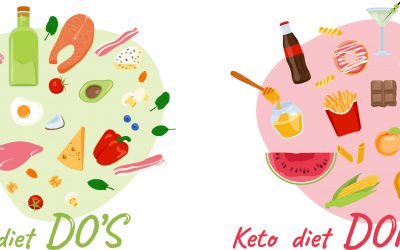Keto For Beginners
In this report, you’re going to learn how to properly get started with KETO and most importantly what mistakes and pitfalls to avoid when you start. Starting today and over the next few weeks You’re going to go from Keto Curious and Keto Confused to Keto Confident!
This is not a comprehensive keto course. It’s designed for the beginner who is just getting started and needs to know the next steps from somebody who has been there, failed on the first attempt and is subsequently having great success with keto. It’s not difficult but it does take some knowledge and dedication!

So, let me ask you a question, what do you know about the Ketogenic diet?
When I ask most people their answer is often, “Isn’t it all about tons of fat and no carbs, you know all bacon and eggs” well this is partially true. But if you think it’s all bacon and eggs, you’re going to be very unhealthy and very dissatisfied with keto and quite frankly you won’t last long. Keto is much more than that!
OK, at its roots keto is high fat and low carb but it’s also moderate protein and done correctly it’s filled with nutrient-dense, high fiber, whole foods… It’s a really fun and healthy lifestyle! My approach is to eat a ketogenic diet focused on getting sufficient micronutrients (vitamins, minerals, essential fatty and amino acids), high dietary fiber and high antioxidants foods. This is super important for long term keto success and optimal health and often lacking with other approaches.
So, what is Ketosis Anyway? And why do I want it?
When you follow a ketogenic diet your body switches from burning carbohydrates as your primary energy source to burning ketones (fat), when this happens you’ve entered a state of ketosis.
Once you’re in ketosis your body starts making ketone bodies. Ketone bodies are molecules that your cells and organs, including the brain, use as fuel in the absence of glucose. This is a normal metabolic process and we are designed to work this way.
The glucose you require for normal bodily functions is made in the liver through a process called gluconeogenesis, which literally means making new glucose. Remember, there is no such thing as an essential carbohydrate. All the glucose you require for optimal health can be manufactured by your body.

Keto Benefits
Effortless weight loss is often touted as the number one benefit of the ketogenic diet, but it doesn’t end there. There are numerous other benefits to being in a state of ketosis.
My Top 10 Benefits of the Ketogenic Diet
- Increased mental clarity and focus
- The Ketogenic diet is anti-inflammatory
- Improved energy levels
- Less frequent and less intense migraines
- Improved sleep
- Improved eyesight
- Increased endurance for athletes
- Effective for both type I and type II diabetes
- Helps stabilize hormone levels, especially in women
- Enhances gastrointestinal health
- Bonus Benefit: Ketogenic diet prevents seizures by enhancing brain energy production, increasing neuron stability
How Do You Know You’re in Ketosis?… You Test For Ketones!
The Three Types of Ketones and How to Test For Each
Urine Ketone (Acetoacetate) is measured using inexpensive urine test strips. The strips are available at most pharmacies and they work well for the first while; until you come become fully keto-adapted. The strips will tell you if you’re in ketosis. If the strip turns purple, you’re definitely making ketones. You can find Ketone Test Strips here. Tip: If you cut the strips in half, lengthwise, you can double your money.
Breath Ketone (Acetone) is measured using a breath meter. These are simple and free to use after the initial purchase. To get a reading you blow into the breath meter and it provides a Ketone reading. The downside is it doesn’t measure your blood glucose level. This is the Ketone Breath Analyzer I use and recommend.
Blood Ketone (beta-hydroxybutyrate) is measured using a blood ketone meter and test strips that are inserted into the meter. Blood testing is generally considered the gold standard of Ketone measurement. The meters are very accurate, and can also measure blood glucose. They can connect to your computer and the data downloaded and analyzed. They do have a couple of downsides though. The test strips are expensive, and you do have to make a finger prick to take the blood sample. This is the one I use.
Getting Started
When getting started on the keto diet everyone wants to Dive Right In and go at it 110%. This is a guaranteed way to feel crappy for most people. You’ve been a carb burner most of your life and it’s going to take some time to transition into being a full-fledged fat-burning machine. So be patient, take it slow at first and let your body adapt to your new lifestyle, you’ll be happy you did!
What we’re trying to do by easing our way in is to avoid the keto flu and believe me you don’t want that. The keto Flu is brutal, I know this firsthand. On my first attempt to go, Keto, I ended up in bed for 2 days and ultimately gave up. After that, I took a step back and did a ton of research. Almost a year later I decided to give it another try and this time it worked out perfectly.
So, what did I do differently the second time? Well, I took it in stages and that’s what I recommend you do too. Start slow and go week by week.
Before we start, here are a couple of suggestions to help you ease your way into ketosis while avoiding or drastically reducing the dreaded keto flu.
Drink Water! As you eliminate carbs from your diet, you’re also going to be losing water from your cells. So, get a pure, clean source of water and drink when you are thirsty. No option here, this is super important. A good starting point is to drink half your body weight in ounces each day, or even slightly more. If you weigh 200 pounds, you’re going to drink 100 oz. (3 liters) of water daily, minimum.
Supplement Electrolytes Along with the water, you’ll also be losing electrolytes. The better you are at maintaining electrolyte balance, the better chance you have of not getting the keto flu. The electrolytes we’re concerned with are sodium, potassium, calcium and magnesium.
The good news is that many of the KETO foods in the YES list below are abundant in these electrolytes. You can also supplement electrolytes especially for the transition period and until you become fully keto adapted.
Sodium – can be supplemented by adding Himalayan Pink Salt, Real Salt™ or Grey Sea Salt to your food.
For potassium, an excellent and tasty choice is to eat a ripe avocado sprinkled with one of the above salts every day. This also gives you a big dose of healthy fat and almost ½ of your daily fiber.
Take a magnesium supplement. I supplement 300mg of magnesium each day, in the form of Magnesium Bis-Glycinate which is an easily assimilable form and available at most health food stores.
A big, leafy green salad each day will go a long way to satisfying most of your electrolyte needs.
So How Do You Ease Into Keto?
Simple, you’re going to do it progressively over the next 3 weeks.
Week 1

Cut Out Sugar and everything containing sugar. This is harder than it sounds, sugar is hiding everywhere. Almost all the pre-packaged food in your cupboard is loaded with sugar. Manufacturers know that humans have a psychological need for sweetness, and they put it in almost everything.
Also, sugar goes by over 70 different names on ingredient lists. Check the ingredients, if it has sugar or one of its aliases then pass.
Also, cut out fruit juice. Fruit juice is loaded with sugar and it doesn’t have to have added sugar, fruit juice has natural sugar, fructose, which is even worse, and is certainly going to derail your efforts to achieve ketosis. So, for the first week, you can eat pretty much how you did before except you’re cutting out all forms of sugar, including fruit and fruit juice.
One more thing, take your body measurements and weight before you start. Don’t obsess over this but it’s fun to look back and see where you came from. I also suggest getting a notepad so you can take notes and write down how you feel as you progress. If you have a ketone meter, record your levels.
Week 2

Now it’s time to cut out grains and everything containing them. This is a big one for most people because grains seem to be in every meal. But if you want to be successful on the keto diet there’s no option here, grains are loaded with carbs. This means all bread, buns, crackers, donuts, bagels etc. It doesn’t matter if it’s white or whole grain it must go. Don’t worry, there are keto versions you’ll love!
Now is also the time to do a kitchen purge. Go through your cupboards, pantry, fridge and take everything containing sugar or grains and put them in a big box. Either give them away or throw them away. This will reduce the temptation if the sudden urge comes along for an unhealthy snack.
So, at the end of two weeks you’ll have cut out sugar and grains and you should feel pretty good. You will have lost some weight by now as well. You may also be making ketones.
Speaking of ketones, what is the correct range? Well, if you’re using the blood test meter, you’re looking for somewhere between 0.5 – 3.0 mmol/L. Anywhere in this range is considered nutritional ketosis and that’s what we’re aiming for. When you started on day one and took your baseline you more than likely had 0.0 – 0.2 or somewhere in that range. Now you’re likely closer to the magical 0.5 which puts you in nutritional ketosis.
Week 3

Starting from the third week forward you’re going to cut the rest of the crap from your diet. This means things like potato chips, nachos, popcorn, pretty much all pre-packaged, boxed food that contains grains, sugars or other unhealthy ingredients. On the keto diet it’s not all about high fat and low carbs it’s also about eating the finest quality, organic, nutrient-dense food you can afford and can find in your area.
Also, this is the end of fast food, fast food is off-limits (for now). Why? Fast food is loaded with unhealthy ingredients, sugars, hidden grains, GMO’s, all things that you’re trying to avoid.
So now that you’ve cut most of the harmful foods from your diet. Let’s talk a little bit about the macros.
By macros, I mean protein, carbohydrates and fat.

When you’re first starting, you’ll want to limit your carbs to about 5% of daily calories. You also want to limit protein to approximately 20% of daily calories and the balance is going to be fat, about 75%. If you follow this, you will definitely get into ketosis.
For some people, it takes just a couple of days and for others, it can take a couple of weeks or even longer. If you’re finding it difficult to get into ketosis you may have to trim back your carbs and protein even a bit more at the start but be patient it will come.
A common mistake I often see is eating too much protein. This is a guaranteed way to prevent you from entering ketosis and can also kick you out. Another mistake is not drinking enough water. When you start to lose weight on the keto diet you not only lose fat but you also lose water and electrolytes. Make sure to Stay Well Hydrated.
What Can I Eat?
“So what the heck am I supposed to eat” ?
You can eat all the foods listed in the Yes list below and foods containing them. Just remember to look out for hidden grains and sugars in prepared foods. Avoid the foods in the NO column these are not your friends on the keto diet.
Starting around June 2020 I’ll be doing a month of highly nutritious Keto meals and posting them daily on my blog at keto-mastery.com/blog. I’ll also be taking daily blood measurements and showing you the procedure so please join me and follow along.
You’ll notice that there are not many fruits listed for keto. That’s because fruits are high in sugar and therefore high in carbs. Fruits do have some beneficial micronutrients and fiber, but these are all things you can get from the rest of your diet.
Once you become fully keto-adapted you can introduce small amounts of the listed berries but be sure to watch your ketone levels. They will tell you when you’ve eaten too many berries and it’s time to back it down. You don’t want to fall out of ketosis after all your hard work and dedication.
Top 8 Tips for Getting into KETOSIS
For most people, it takes about 48 to 72 hours to get into ketosis. Here are some tips to help you get there as fast as possible following your 3 weeks of easing in.
Tip 1: Eat less than 20g of carbs per day until you achieve ketosis. You can adjust up slightly after that to maintain optimal ketosis for your body type.
Tip 2: Drink Water: Make sure to drink a minimum of ½ your body weight in ounces. Drink more if necessary.
Tip 3: Test your ketone level: Pick up some Urine Test Strips or better, get a blood or breath meter. You won’t know you’re in ketosis unless you test.
Tip 4: Be patient. As mentioned above, drink water and supplement with electrolytes to ward off the keto flu. If you do get a touch of the keto flu don’t worry, it usually only lasts for a couple of days. Reward yourself with some delicious keto foods whenever you crave carbs and sugar. The cravings will pass if you stay full and satiated.
Tip 5: Consume additional salt, this is important. While in ketosis your body does not retain water as it does as a carb burner. Electrolytes like sodium quickly flush out of your body and do need constant replenishing otherwise you’ll begin to feel crappy.
Tip 6: Stay Full! When you feel the tiniest hunger pang eat some high fat, low carb food. The moment you get too hungry, it creates the temptation pathway. Remember, go simple. Don’t make it too strict, keep it fun and easy. It’s always good to have some of your favorite fat bombs on hand. See our recipe section for delicious fat bomb recipes.
Tip 7: Remember, this is not a high protein diet. The keto diet is high fat, low carb and moderate protein. Moderate is the key for protein.
Tip 8: Embrace the fat! Eat fat to lose fat is your new motto. Do not shy away from the fat, it is your ticket to a healthier you.
Common Keto Diet Mistakes
Nobody is perfect, and no diet is perfect. As you adopt this diet for good health and weight loss, you are bound to make some mistakes; this is normal. The best way to avoid or minimize the effects of mistakes is by learning and preparing for common mistakes. Below is a list of common keto diet mistakes.
Eating Too Many Carbs
There is no exact definition of what ‘low carb’ means. Some would say it is anything under 100 grams per day simply because they get amazing results in this range. However, this may be excessive for your body type. Most keto dieters go for under 50 grams of carbs per day (some people need to be under 20 grams) to get into and stay in nutritional ketosis.
Eating Too Much Protein
Remember: the keto diet is about moderate protein. Try to stay at or below 1g of protein per kilo of body weight per day for the best results. Excess protein is converted into glucose and will derail your efforts.
Impatience
As you adopt a keto lifestyle, you need patience: patience to get into ketosis and patience to adapt to ketosis. Remember that previously, your body’s main source of energy was carbs; now, it must adapt to a new source of energy, fat. The body requires time to do this; be patient.
Obsessing Over the Scale
The number on your scale should not determine your keto diet success. Let this be the least of your worries. Just live life and enjoy your progress. Weight loss will happen; do yourself a favor and keep away from the scale.
Not Eating Enough Fat
The unrestricted consumption of fats may seem excessive at first. However, the keto diet is a high-fat diet. Just trust keto and enjoy the fat. However, you should eat the right kind of fats, preferably monounsaturated and saturated fats.
Eating Processed “Keto” Foods
When you are on a keto diet the intention is to eat natural ingredients and not foods that come pre-packaged such as Atkins and Quest bars. Although you can eat these occasionally, the idea is for a large portion of your diet (we’re talking 70-80% of your entire diet) to consist of natural, whole foods.
Eating Too Many Calories
When eating a high fat diet it’s easy to consume a ton of calories. Fat has 9 calories per gram where carbs and protein have only 4 calories per gram. If you find you are not losing weight on the keto diet this is most likely the reason, too many calories. Try cutting back on calorie intake while keeping your fat, carb and protein ratios correct. This is especially true for post menopausal women, just ask my wife!
Final Comments
When you start the Keto diet, I recommend taking an excellent quality vitamin/mineral supplement…This is the one I take
A couple of good shows to watch if you haven’t already – Fat: A Documentary on Amazon Prime and … The Magic Pill on Netflix.
A great book for the Keto beginner is KETO Clarity by Jimmy Moore
Click here to get your very own, personalized Custom Keto diet plan. This is how I started and still it use today.
Last thing. The one food that everyone misses on keto is Bread and other bakery items. Check this out…and you won’t miss bread on your keto journey.
So, now that you know the basics it’s time to check out which foods support you on your Keto journey and which foods are on the avoid list. Please click the link below to get a detailed list of the Keto YES and NO foods.
Detailed YES and NO Keto Food List
Some of our favorite Keto Recipes
Please Note:
This report is for informational purposes only. Always consult your trusted healthcare provider regarding any medical issues and make an informed decision.
If you are taking any kind of medication or have other health concerns you should see a qualified medical practitioner before starting and throughout your journey on the keto diet. We wish you the very best!




0 Comments